The Phrygian language
Translation of Phrygian scripts (continued)
by Mel Copeland
(Based on a related work, Etruscan Phrases,
first published in 1981)
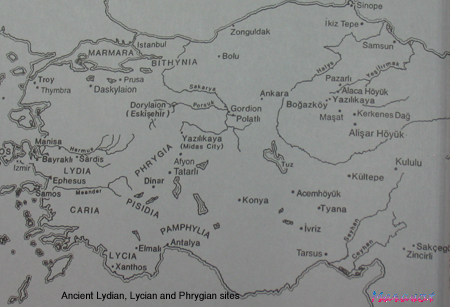
The anthropological record
Midas City is an intriguing site with fifty altars or more. The altars are approached by various numbers of steps. The top of the plateau where the highest altars reach appears to be barren rock. Because the surviving images of the Phrygians include a figure identified as Mater (Cybele), with a Twin Idol with a swastika, the Tree of Life is implied. The Tree of Life is identified in the Bible, as the tree from which Eve stole the apple in the Garden of Eden (Genesis 3) but it was also described in detail by cultures around the world. It's complex symbol appears in two forms: the labyrinth and the swastika, or Indian sign. The labyrinth is a representation of the mother earth.
Men 30,000 years ago drew magnificent compositions in labyrinths. The Chauvet -Pont-D'Arc cave, the cave of Lascaux, the cave of Altamira, Spain and a recent discovery, of a cave in Britain dating about 12,000 years ago, reveal painted chambers that appear to be more like cathedrals in the womb of the earth than places for shelter. Many of the images in the caves can be accessed only through passages almost too small to crawl through – perhaps symbolizing the passage of a child from the uterus to the outside world. The richly painted figures of people and animals display the artist's love for the environment and a shamanistic hope in affecting their future. Symbolic killing of game assured continued prosperity – supply of the herds upon which they depended – and pregnant females of animals and people assured a continuing, healthy propagation of the species. About 10,000 years ago, with the recession of the Ice Age, the rock art was moved out-of-doors. The Rock Engravings of Gobustan, near the "Iron Gate" on the Caspian Sea, is a good representation of the art. Art like that of Gobustan can be found around the world, in the Americas, Australia, Middle East, Scandinavia, etc. The paintings in these labyrinths show a belief system that presumes an afterlife and also a mystery assuring the propagation of the species, including those of the cave dwellers and their game. Among the statuary from this formative period in human history was a statue of a plump female called the Venus of Willendorf. Other statues of this motherly goddess, from other periods, have also been found, all representing the continuation of the species. The lady has been found usually with large breasts, plump in frame, and in some cases she has a swastika inscribed in her vulva region.
The vulva is representative of rebirth, and the sign of rebirth in nature is shown through Spring's renewal of vegetation. Early men attempted to describe this mystery and discerned that the creation was by a god who whirled around a tree, an antelope or, in the case of the Americas, a thunderbird. All of the animals of creation, including men, were distributed around the world as the god whirled the object in his hand. The thing which he whirled in the air became represented in abstract form, eventually taking the shape of the modern swastika or Indian sign. In general the sign has become know as a symbol of "good luck" but it ultimately represents the creation and eternal life.
Coupled with the swastika is the concept of the flow of eternal waters. The eternal waters are equated in primitive minds, in terms of the creation, in the context of the amniotic fluid produced in childbirth. Early goddesses were pictured seated upon a throne, with lions established on either side, and with a tree directly behind her. Usually the tree was pictured as a palm tree. But another plant, probably from Egypt, became identified with eternal waters flowing beneath the tree, and that plant was the lotus. Its curled leaves, between which a shoot sprang forth, became transformed to architectural designs, often being adopted in the design of capitals of pillars in temples, such as the Greek Corinthian style. The Lotus design became an important nexus in the pediment of Phrygian monuments.
The creation could not be described through the female alone, though she represented the mystery of creation in all of its aspects. Men had a place in it and early civilizations developed a hero, the best known being Gilgamesh, of the Sumero-Akkadian epics, whose exploits were so great the gods got jealous. They decided to create a double who would be just like Gilgamesh in strength and wit, but not with the same heart. The gods hoped that Enki, the double, would murder Gilgamesh so that they would not have to be bothered by Gilgamesh anymore. Unfortunately, when their plan went awry. Enki was so much like Gilgamesh he came to love the double. Rather than attempt to destroy him, Enki became his comrade in arms and adventures. This made the gods even more furious, so they decided to kill Enki. At that time Gilgamesh was one of the most unassuming and innocent men on earth, in spite of his power. But when Enki was killed he realized his own mortality. He began to inquire with the gods, as to how he could get immortality. He was told to go to a character that is called "The Old Man of the Sea" – a person that is like Noah, and he would give him the key to eternal life. So Gilgamesh set off in search of the Old Man of the Sea, who happened to be where the sun rises, somewhere near India.
When he arrived at the Old Man of the Sea's abode, he was told that to obtain immortality he must dive down to the bottom of the sea is such a place and gather the "Branch." When he possesses the "Branch" he will obtain eternal life. So Gilgamesh dived down into the depths, recovered the Branch, and rested upon the shore. He was so tired he fell asleep at the base of a large tree. While he was sleeping a snake came up and stole the "Branch." This is how Gilgamesh lost his immortality.
There are other versions to the story. In the Mycenaean, Cypriote and Minoan rings and seals we see Gilgamesh, or the hero, running away with the "Branch." Guarding the "Branch" would be either a handmaiden, Mater, the mother goddess, or a beast, like a dog. Cereberus, the three-headed dog, guarded Hades, also called the Underworld, for instance. The "Branch" is also mentioned in the context of the Messiah in several places in the Bible, including:
Isaiah 11.1 And there shall come forth a rod out of the stem of Jesse, and a Branch shall grow out of his roots
11.2 And the spirit of the LORD shal rest upon him, the spirit of wisdom and understanding, the spirit of counsel and might, the spirit of knowledge and of the fear of the LORD;
Zech. 3.8 ..for, behold, I will bring forth my servant the BRANCH;
Zech. 6.12..Behold the man whose name is The BRANCH; and he shall grow up out of his place, and he shall build the temple of the LORD.
The Dead Sea Scrolls, "Commentary on Habakkuk," interprets this Messiah: "...The Lord declares to you that he will build you a house (2 Sam. 7.11) I will raise up your seed after you (2 Sam. 7.12) I will establish the throne of his kingdom forever (2 Sam. 7.13) I will be his father and he shall be my son (2 Sam. 7.14). He is the Branch of David who shall arise with the Interpreter of the Law to rule in Zion at the end of time. As it is written, I will raise up the tent of David that is fallen (Amos 9.11). That is to say, the fallen tent of David is He who shallarise to save Israel.
Associated with the "Branch" in ancient art forms is the umbilical cord and parts of the placenta. These are some of the images that connect the promise of eternal life: the labyrinth, the swastika, the Mother Goddess seated upon a throne above ever flowing waters; the concept that the gods live atop the mountains; the identification of stag horns with the branches of a tree (seen as a headdress on shamans and priests/kings); a guard – either a female attendant or a vicious dog or monster – protecting the source of eternal life, symbolized by a fountain or a branch; and the theft of the branch by a semi-divine hero who loses in the attempt to gain immortality. Apart from the story of Gilgamesh we have many examples of the hero who is born of a god and a woman, such as Heracles, Achilles and Aeneas. Aeneas was a Trojan leader and ancestor of the first emperors of Rome. He was the son of Aphrodite by Anchises, a member of the royal line of Dardania. Born on Mt. Ida, he was reared by nymphs and brought to Anchises when he was five years old. Anchises was maimed by Zeus for revealing the name of the child's mother. Among his many exploits, beginning with leading the Dardanian troops in the Trojan War, Aeneas plucked the Golden Bough that grew on a tree near Cumae. On the advice of the Cumaean Sybyl, Aeneas plucked this bough as a sign to Charon and a gift for Proserpina (Gr. Persephone) when he descended into the Underworld. Without it, he would not have gained access there. "The Golden Bough, familiar from Vergil's Aeneïd, won new literary prominence when Sir James Frazer chose it as a peg on which to hang his own Golden Bough. This thirteen-volume work proved a monumental contribution to the study of comparative religion," says Edward Tripp (The Meridian Handbook of Classical Mythology).
Competing with these demigods in Greek mythology is Theseus who perhaps rivalled Heracles in labors and exploits. Among the many labors performed by Heracles there is his exploit of carrying off Cerberus, the three-headed dog guarding Hades, to Eurystheus. Eurystheus told Heracles, from a safe distance, to take him back to Hades. The tenth labor Eurystheus required of Heracles was to carry off the cattle of three-headed Geryon, king of Erytheia, now called Cadiz. Before that, in his eighth labor, Heracles was sent to Thrace to fetch the Mares of Diomedes. The mares were fed human flesh by that savage king.
On his way to fetch the mares Heracles stopped at the palace of Admetus, king of Pherae. The king was in mourning, but, in order that his guest's pleasure should not be lessened, pretended that the dead person was a stranger in the house. After carousing awhile, Heracles learned that it was actually Admetus' wife Alcestis who had died. Heracles, embarrassed at his own seeming callousness, rushed to the queen's tomb, ambushed Thanatos (Death) as he was carrying her off, and took her from him by main force. Other accou9nts say that he went down to the Underworld and fought Hades for her. The second labor that Eurystheus demanded of Heracles was to kill the Hydra. This hideous, many-headed creature, half-sister of the Nemean lion (which Heracles had just killed, as his first labor) through either its father, Typhon, or its mother, Echnida, had been nourished by Hera herself, out of her hatred for Heracles. It lived near the spring Amymone, at Lerna, in company with its devoted friend, a large crab. With his usual boldness Heracles advanced to the Hydra's lair, to drive it into the flight of burning arrows. It emerged, its monstrous body surmounted by nine or more heads. When Heracles grabbed it by one of its necks, it immediately wound itself about one of his feet. Then he discovered that whenever he lopped off a head the head grew back, and aggravating him was the crab who sallied from the swamp and began biting his foot. He called his friend and charioteer, Iolaüs, over to help him. Whenever Heracles lopped off the Hydra's head Iolaüs would cauterize the wound with a burning brand, preventing the head from growing back. The monster had one immortal head that they disposed of by burying it under a stone on the road from Lerna to Elaeüs. Heracles then ripped open the body and dipped his arrows in its deadly gall. The poison was useful in later years against his enemies but in the end he, himself, was accidentally destroyed by it. His arch enemy, the mother of the gods, Hera, is reported to have had a hand in Heracle's death, however.
Theseus is best remembered for having killed the man-eating Minotaur that was half man and half bull, in the Labyrinth of King Minos of Crete. He also descended to the Underworld but was confined there on the Seat of Forgetfulness, along with his friend Peirithoüs. The two had made the mistake of attempting to abduct Helen of Troy and then sought to abduct Persephone, wife of Hades. Theseus might have been confined there through eternity had it not been for Heracles' descent into the Underworld to fetch Cerberus for Eurystheus. While Heracles was able to pry Theseus away from his seat, while he pulled at Peirithoüs the earth quaked and Heracles dared not continue.
Other Greek heros include Jason and the Argonauts, who captured the Golden Fleece from Colchis, assisted by the king's daughter, Medea, a sorceress, and Perseus who is best known for killing the Gorgon, Medusa. No man had ever returned alive from an encounter with the Gorgons, and to kill Medusa Perseus would have to attack invisibly and fly faster than her sisters could fly. Anyone looking upon the face of Medusa – out of her head came innumerable snakes – would be instantly turned to stone. He was able to destroy Medusa by cajoling the Graeae – two hags that had been gray-haired from birth – to reveal how to overcome Medusa and obtaining from the nymphs who kept the weapons the pouch he slung over his shoulder, a pair of winged sandals which enable him to out fly the golden winged Gorgons, and the cap of darkness that made him invisible as soon as he put it on top of his head. Hermes appeared and gave Perseus the last weapon, a sword or sickle of adamant. To avoid looking at the Medusa as he approached by the petrified forms of men and animals that had looked at the Gorgons' faces, Perseus used his highly polished shield as a mirror and approached the lair backwards. Invisible, he soon found the Gorgons, hideous monsters with hands of brass and wings of gold; huge tongues lolled from their mouths between swine's tusks, and their heads were entwined with snakes. Waiting for the Gorgons to fall asleep the invisible Perseus then approached Medusa and lopped off her head, stuffed it into the wallet and flew off.
Gilgamesh, the Sumerian hero of Uruk (the epic dates circa. 1,750 B.C.) sets the standard for these and other heros: [From anceintexts.org]
Tablet I
Find the copper tablet box,
open the ... of its lock of bronze,
undo the fastening of its secret opening.
Take and read out from the lapis lazuli tablet
how Gilgamesh went through every hardship.
Supreme over other kings, lordly in appearance,
he is the hero, born of Uruk, the goring wild bull.
He walks out in front, the leader,
and walks at the rear, trusted by his companions.
Mighty net, protector of his people,
raging flood-wave who destroys even walls of stone!
Offspring of Lugalbanda, Gilgamesh is strong to perfection,
son of the august cow, Rimat-Ninsun;... Gilgamesh is awesome to perfection.
It was he who opened the mountain passes,
who dug wells on the flank of the mountain.
It was he who crossed the ocean, the vast seas, to the rising sun,
who explored the world regions, seeking life.
It was he who reached by his own sheer strength Utanapishtim, the Faraway,
who restored the sanctuaries (or: cities) that the Flood had destroyed!
... for teeming mankind.
Who can compare with him in kingliness?
Who can say like Gilgamesh: "I am King!"?
Whose name, from the day of his birth, was called "Gilgamesh"?
Two-thirds of him is god, one-third of him is human.
The Great Goddess [Aruru] designed(?) the model for his body,
she prepared his form ...
... beautiful, handsomest of men,
... perfect
...
He walks around in the enclosure of Uruk,
Like a wild bull he makes himself mighty, head raised (over others).
There is no rival who can raise his weapon against him.
His fellows stand (at the alert), attentive to his (orders ?)...
Becoming aware of himself, he sought a friend.
Enkidu spoke to the harlot:
"Come, Shamhat, take me away with you
to the sacred Holy Temple, the residence of Anu and Ishtar,
the place of Gilgamesh, who is wise to perfection,
but who struts his power over the people like a wild bull.
I will challenge him ...
Let me shout out in Uruk: I am the mighty one!'
Lead me in and I will change the order of things;
he whose strength is mightiest is the one born in the wilderness!"
[Shamhat to Enkidu:]
"Come, let us go, so he may see your face.
I will lead you to Gilgamesh – I know where he will be.
Look about, Enkidu, inside Uruk-Haven,
where the people show off in skirted finery,
where every day is a day for some festival,
where the lyre(?) and drum play continually,
where harlots stand about prettily,
exuding voluptuousness, full of laughter
and on the couch of night the sheets are spread (!)."
Enkidu, you who do not know, how to live,
I will show you Gilgamesh, a man of extreme feelings (!).
Look at him, gaze at his face –
he is a handsome youth, with freshness(!),
his entire body exudes voluptuousness
He has mightier strength than you,
without sleeping day or night!
Enkidu, it is your wrong thoughts you must change!
It is Gilgamesh whom Shamhat loves,
and Anu, Enlil, and La have enlarged his mind."
Even before you came from the mountain
Gilgamesh in Uruk had dreams about you.""
...He (Enkidu) walked down the street of Uruk-Haven,
... mighty...
He blocked the way through Uruk the Sheepfold.
The land of Uruk stood around him,
the whole land assembled about him,
the populace was thronging around him,
the men were clustered about him,
and kissed his feet as if he were a little baby(!).
Suddenly a handsome young man ...
For Ishara the bed of night(?)/marriage(?) is ready,
for Gilgamesh as for a god a counterpart(!) is set up.
Enkidu blocked the entry to the marital chamber,
and would not allow Gilgamreh to be brought in.
They grappled with each other at the entry to the marital chamber,
in the street they attacked each other, the public square of the land.
The doorposts trembled and the wall shook,
[About 42 lines are missing from the Standard Version; lines 103-129 are taken from
the Old Babylonian version.]
Gilgamesh bent his knees, with his other foot on the ground,
his anger abated and he turned his chest away.
After he turned his chest Enkidu said to Gilgamesh:
"Your mother bore you ever unique(!),
the Wild Cow of the Enclosure, Ninsun,
your head is elevated over (other) men,
Enlil has destined for you the kingship over the people."
[19 lines are missing here.]
They kissed each other and became friends.
...[the mother of Gilgamesh] went up to the roof and set incense in front of Shamash.
I she offered fragrant cuttings, and raised her arms to Shamash.
"Why have you imposed – nay, inflicted! – a restless heart on
my son, Gilgamesh!
Now you have touched him so that he wants to travel
a long way to where Humbaba is!
He will face fighting such as he has not known,
and will travel on a road that he does not know!
Until he goes away and returns,
until he reaches the Cedar Forest,
until he kills Humbaba the Terrible..
...At twenty leagues they broke for some food,
at thirty leagues they stopped for the night,
walking fifty leagues in a whole day,
a walk of a month and a half.
They dug a well facing Shamash
Gilgamesh climbed up a mountain peak,
made a libation of flour, and said,
"Mountain, bring me a dream, a favorable message from
Shamash."
...hey cut through the Cedar,
While Gilgamesh cuts down the trees, Enkidu searches through
the urmazallu.
Enkidu addressed Gilgamesh, saying:
"My friend, we have cut down the towering Cedar whose top
scrapes the sky.
Make from it a door 72 cubits high, 24 cubits wide,
one cubit thick, its fixture, its lower and upper pivots will be out of one piece.
Let them carry it to Nippur, the Euphrates will carry it down, Nippur will rejoice.
..."
They tied together a raft...
Enkidu steered it...
while Gilgamesh held the head of Humbaba.
...Anu addressed Princess Ishtar, saying: "What is the matter?
Was it not you who provoked King Gilgamesh?
So Gilgamesh recounted despicable deeds about you,
despicable deeds and curses!"
Ishtar spoke to her father, Anu, saying:
"Father, give me the Bull of Heaven,
so he can kill Gilgamesh in his dwelling.
If you do not give me the Bull of Heaven,
I will knock down the Gates of the Netherworld,
I will smash the door posts, and leave the doors flat down,
and will let the dead go up to eat the living!
And the dead will outnumber the living!"
Anu addressed princess Ishtar, saying:
"If you demand the Bull of Heaven from me,
there will be seven years of empty husks for the land of Uruk.
Have you collected grain for the people!
Have you made grasses grow for the animals?"
Ishtar addressed Anu, her father, saying:
"I have heaped grain in the granaries for the people,
I made grasses grow for the animals,
in order that they might eat in the seven years of empty husks.
I have collected grain for the people,
I have made grasses grow for the animals."
When Anu heard her words, he placed the nose rope of the Bull of Heaven in her hand.
Ishtar led the Bull of Heaven down to the earth.
When it reached Uruk It climbed down to the Euphrates...
At the snort of the Bull of Heaven a huge pit opened up,
and 100 Young Men of Uruk fell in.
...Enkidu stalked and hunted down the Bull of Heaven.
He grasped it by the thick of its tail
and held onto it with both his hands (?),
while Gilgamesh, like an expert butcher,
boldly and surely approached the Bull of Heaven.
Between the nape, the horns, and... he thrust his sword.
After they had killed the Bull of Heaven,
they ripped out its heart and presented it to Shamash.
..."My friend, why are the Great Gods in conference?
(In my dream) Anu, Enlil, and Shamash held a council,
and Anu spoke to Enlil:
'Because they killed the Bull of Heaven and have also slain
Humbaba,
the one of them who pulled up the Cedar of the Mountain
must die!'
Enlil said:'Let Enkidu die, but Gilgamesh must not die!'
Bur the Sun God of Heavenl replied to valiant Enlil:
'Was it not at my command that they killed the Bull of
Heaven and Humbaba!
Should now innocent Enkidu die!'
Table IX
...Over his friend, Enkidu, Gilgamesh cried bitterly, roaming the wilderness.
"I am going to die! – am I not like Enkidu?!
Deep sadness penetrates my core,
I fear death, and now roam the wilderness –
I will set out to the region of Utanapishtim, son of Ubartutu,
and will go with utmost dispatch!
When I arrived at mountain passes at nightfall,'
I saw lions, and I was terrified!
I raised my head in prayer to Sin,
to – the Great Lady of the gods my supplications poured
forth, 'Save me from... !"'
...The Scorpion-Beings
The mountain is called Mashu.
Then he reached Mount Mashu,
which daily guards the rising and setting of the Sun,
above which only the dome of the heavens reaches,
and whose flank reaches as far as the Netherworld below,
there were Scorpion-beings watching over its gate.
Trembling terror they inspire, the sight of them is death,
their frightening aura sweeps over the mountains.
... "I have come on account of my ancestor Utanapishtim,
who joined the Assembly of the Gods, and was given eternal life.
About Death and Life I must ask him!"
The scorpion-being spoke to Gilgamesh ..., saying:
"Never has there been, Gilgamesh, a mortal man who could do that(?).
No one has crossed through the mountains,
for twelve leagues it is darkness throughout –
dense is the darkness, and light there is none.
To the rising of the sun ...
To the setting of the sun ...
To the setting of the sun ...
They caused to go out..."
Tablet X
...The tavern-keeper spoke to Gilgamesh, saying:
"There has never been, Gilgamesh, any passage whatever,
there has never been anyone since days of yore who crossed
the sea.
The (only) one who crosses the sea is valiant Shamash, except
for him who can cross!
The crossing is difficult, its ways are treacherous--
and in between are the Waters of Death that bar its approaches!
And even if, Gilgamesh, you should cross the sea,
when you reach the Waters of Death what would you do!
Gilgamesh, over there is Urshanabi, the ferryman of Utanapishtim.
'The stone things' are with him, he is in the woods picking
mint( !).
Go on, let him see your face.
If possible, cross with him;
if not, you should turn back."
...Gilgamesh spoke to Utanapishtim, the Faraway:
"I have been looking at you,
but your appearance is not strange – you are like me!
You yourself are not different – you are like me!
My mind was resolved to fight with you,
(but instead?) my arm lies useless over you.
Tell me, how is it that you stand in the Assembly of the Gods,
and have found life!"
Utanapishtim spoke to Gilgamesh, saying:
"I will reveal to you, Gilgamesh, a thing that is hidden,
a secret of the gods I will tell you!
...Then Gilgamesh raised a punting pole
and drew the boat to shore.
Utanapishtim spoke to Gilgamesh, saying:
"Gilgamesh, you came here exhausted and worn out.
What can I give you so you can return to your land?
I will disclose to you a thing that is hidden, Gilgamesh,
a... I will tell you.
There is a plant... like a boxthorn,
whose thorns will prick your hand like a rose.
If your hands reach that plant you will become a young
man again."
Hearing this, Gilgamesh opened a conduit(!) (to the Apsu)
and attached heavy stones to his feet.
They dragged him down, to the Apsu they pulled him.
He took the plant, though it pricked his hand,
and cut the heavy stones from his feet,
letting the waves(?) throw him onto its shores.
Gilgamesh spoke to Urshanabi, the ferryman, saying:
"Urshanabi, this plant is a plant against decay(!)
by which a man can attain his survival(!).
I will bring it to Uruk-Haven,
and have an old man eat the plant to test it.
The plant's name is 'The Old Man Becomes a Young Man.'"
... Then I will eat it and return to the condition of my youth."
At twenty leagues they broke for some food,
at thirty leagues they stopped for the night.
Seeing a spring and how cool its waters were,
Gilgamesh went down and was bathing in the water.
A snake smelled the fragrance of the plant,
silently came up and carried off the plant.
While going back it sloughed off its casing.'
At that point Gilgamesh sat down, weeping...
Examine now the images that incorporate most of the themes discussed so far:
|
Labyrinths
|
||||||||||||||||||||||||||||||||||||||||||||||||||||||||||||||||
|
Tree of Life and Venus
|
Cylinder seals and rings
|
|||||||||||||||||||||||||||||||||||||||||||||||||||||||||||||||
|
Comments on the images
1) The spiral decoration shown in the Phrygian and Urartian vases is common |
||||||||||||||||||||||||||||||||||||||||||||||||||||||||||||||||
| Distribution of the Tumuli and Dolmen Cultures
We cannot presume that the peoples who buried their dead in tumuli, dolmens and long barrows were all Indo-Europeans. Bu Pliny's "Natural History, Book III.56, "Inventions," includes some interesting comments relating to the Lydians, Phrygians, Carians and Tyrhennians." The comments suggest an antiquity to the western Anatolian culture and its influence upon Greek culture. The comments referring to the invention of the four -wheeled wagon and chariot pulled by two horses is interesting from the standpoint that the Yamna culture of southern Russia appears to be the earliest to have used chariots, according to wikipedia.org. They also buried their dead in timber-lined tombs.
|
||||||||||||||||||||||||||||||||||||||||||||||||||||||||||||||||
![]()
![]()
![]() home
home
Phrygian1.html
Notes:
1) Most of the images of the swastikas and labyrinths are from the exceptional work of Clyde E. Keeler, "Apples of Immortality from the Cuna Tree of Life," Exposition Press, NY, 1961. Some of the images from seals and rings are from Samuel Noah Kramer's "Sumerian Mythology," Harper & Brothers, NY, 1961.
2) Images of the Etruscan vases, etc. are from Federica Borrelli and Maria Cristina Targia, "The Etruscans," The J. Paul Getty Museum, Los Angeles, 2004; Massimo Pallottino, "The Etruscans," Indiana University Press, 1975; Raymond Bloch, "The Etruscans," Frederick A. Praeger, NY, 1956.
3) The vase from Shengavit is from "The People of the Hills, Charles Burney and David Marshall Lang, Phoenix Press, London, 1971.
4) Map of the distribution of pottery is from John Linton Myers, "Who were the Greeks, University of California Press, Berkeley, 1930.
5) Maps on the distribution of tumuli, Yamnaya Culture, and "Center of Indo-Europeans" : J. P. Mallory, "In Search of the Indo-Europeans, Language, Archeology and Myth," Thames and Hudson, 1999.
6) "Who were the Greeks?" by John Linton Myres, University of California Press, Berkeley, 1930., pp. 241ff.
![]()
![]() Etruscan Glossary with Phrygian words:
Etruscan Glossary with Phrygian words:
![]() Send me to Lydian.html
Send me to Lydian.html
![]() Click here for a spreadsheet of the words, Lydian Glossary.xls or Lydian_Glossary.html
Click here for a spreadsheet of the words, Lydian Glossary.xls or Lydian_Glossary.html
Launched 4.22.07
Updated: 4.23.07; 4.25.07; 4.26.07; 5.27.07; 9.25.07
Copyright © 2007 Maravot. All rights reserved.
Copyright © 2007 Mel Copeland. All rights reserved.
Use of the information on this page for publication in any media is forbidden without the prior written consent of the author.

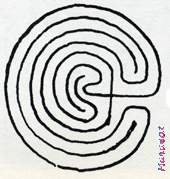
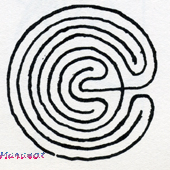

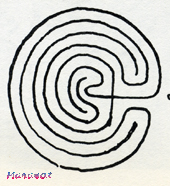
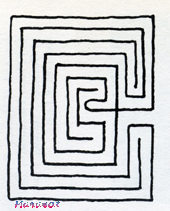
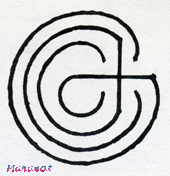

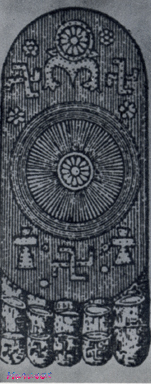
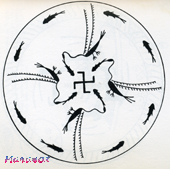
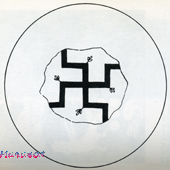

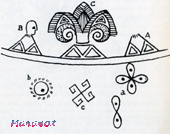

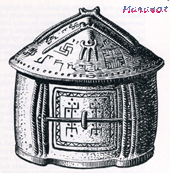
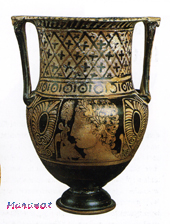
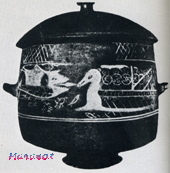

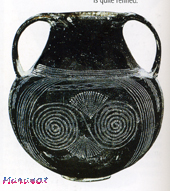
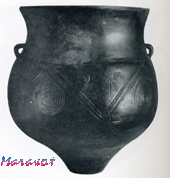
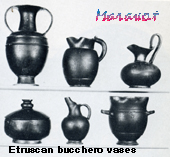
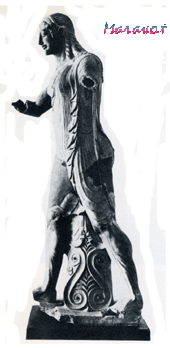
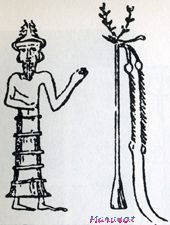

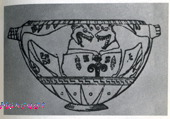
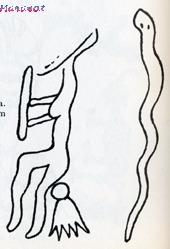
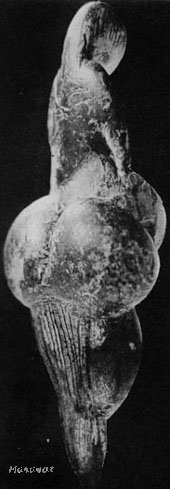
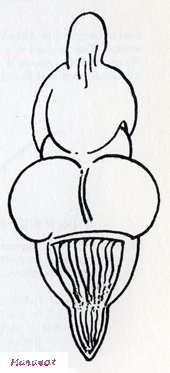
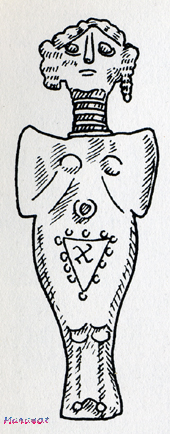
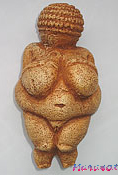
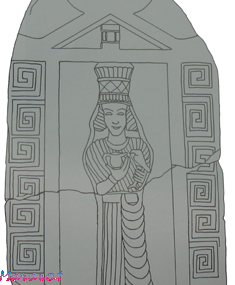


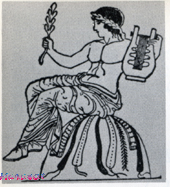

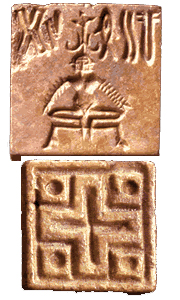




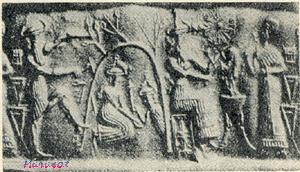

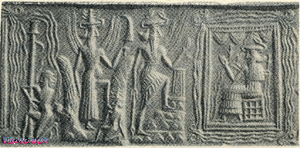
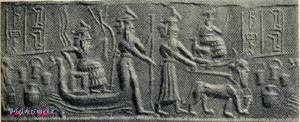
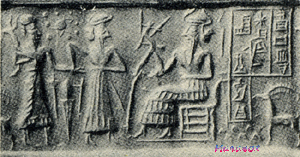
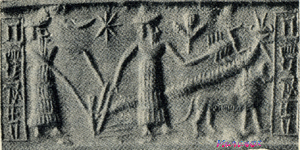



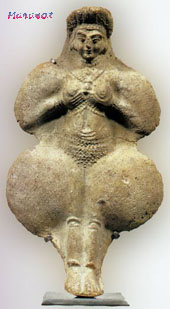
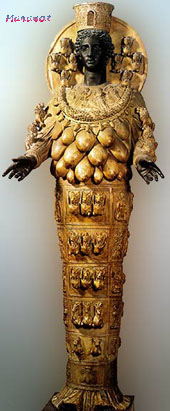
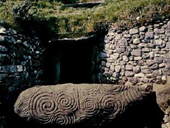
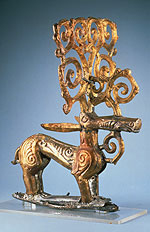 the "Branch" is the stag antlers. The stag was a popular theme on Scythian goldwork. This jewel is from the Russian Steppes, now in Russia's Hermitage Museum. Note the spiral decorations on the stylized deer.
the "Branch" is the stag antlers. The stag was a popular theme on Scythian goldwork. This jewel is from the Russian Steppes, now in Russia's Hermitage Museum. Note the spiral decorations on the stylized deer.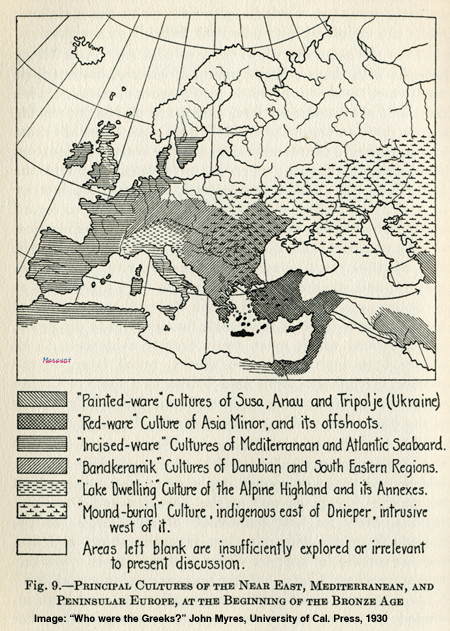 t the distribution of their "monuments" coincides with the distribution of Indo-European groups. There are exceptions that would bear further investigation: the dolemens in Korea and Japan. But the Dolmens from India to the Russian Steppes and Europe do seem to be of the same linguistic group: Indo-European. They also share a common set of symbols that express their belief in the Underworld. An old, but useful map on the distribution of pottery in the Indo-European settlement area, dating from Myer's Sather Gate Lectures.
t the distribution of their "monuments" coincides with the distribution of Indo-European groups. There are exceptions that would bear further investigation: the dolemens in Korea and Japan. But the Dolmens from India to the Russian Steppes and Europe do seem to be of the same linguistic group: Indo-European. They also share a common set of symbols that express their belief in the Underworld. An old, but useful map on the distribution of pottery in the Indo-European settlement area, dating from Myer's Sather Gate Lectures. 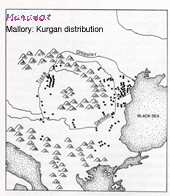 Against this map we may place a more recent, specific map of the Black Sea kurgans (tumuli). The tumuli continue across Turkey from the west, being concentrated in abundance near the ancient Lidyan city of Sardes. Sardes was known for its gold and was the first city to produce coins in the ancient world.
Against this map we may place a more recent, specific map of the Black Sea kurgans (tumuli). The tumuli continue across Turkey from the west, being concentrated in abundance near the ancient Lidyan city of Sardes. Sardes was known for its gold and was the first city to produce coins in the ancient world. 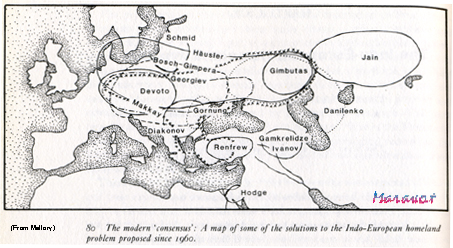
 Thus, we can observe how the remotest fringes of the Catholic Roman Empire rooted in Ireland and the Philippines, where the practice of the faith is among the most conservative in the reach of that culture. In like manner we can observe how the remote areas of Phrygia retained the conservative culture of their "source," which appears to be in the Danube area. That source may be traced to the Yamayana cultures about 3,000 B.C.
Thus, we can observe how the remotest fringes of the Catholic Roman Empire rooted in Ireland and the Philippines, where the practice of the faith is among the most conservative in the reach of that culture. In like manner we can observe how the remote areas of Phrygia retained the conservative culture of their "source," which appears to be in the Danube area. That source may be traced to the Yamayana cultures about 3,000 B.C.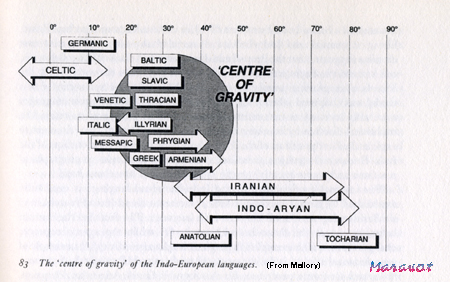 This being said, archeologists have developed maps describing the diffusion of pottery and other cultural artifacts found in Europe and Asia that tend to describe the presence of Indo-European communities. From these maps and the study of the movements of extant Indo-European populations as well as those, like the Phrygian, that are long gone, various frameworks on the branching of the ten major Indo-European languages have been developed. As new data are gathered pertaining to the lost languages and civilizations / cultures, these maps and frameworks are modified.
This being said, archeologists have developed maps describing the diffusion of pottery and other cultural artifacts found in Europe and Asia that tend to describe the presence of Indo-European communities. From these maps and the study of the movements of extant Indo-European populations as well as those, like the Phrygian, that are long gone, various frameworks on the branching of the ten major Indo-European languages have been developed. As new data are gathered pertaining to the lost languages and civilizations / cultures, these maps and frameworks are modified.